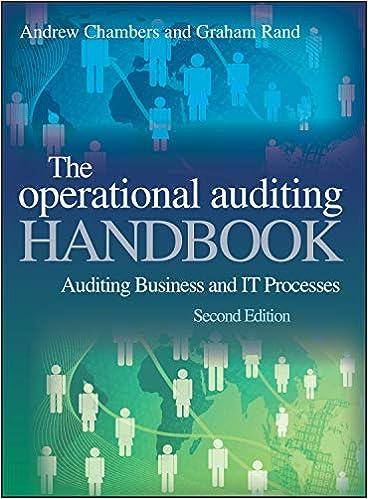Question
Magnificent Machines Ltd is an Australian manufacturer of packaging machines with over 5,000 employees based in Australia. The organisational structure of Magnificent Machines Ltd separates
Magnificent Machines Ltd is an Australian manufacturer of packaging machines with over 5,000 employees based in Australia. The organisational structure of Magnificent Machines Ltd separates the companys payroll function (Payroll Services) from its human resources function (HR). Payroll Services takes care of the companys payroll and related duties, such as ensuring compliance with tax laws, creating and updating employee files, entering sick leave, and calculating overtime, holiday pay, and bonuses. In contrast, HR is responsible for hiring talent, authorising pay rates and salaries, and employee relations, in general, to ensure employees deliver according to expectations. For instance, HR gathers all relevant employee information and determines the appropriate pay rate or salary when hiring a new employee. This information is then forwarded to the responsible payroll officer to set up the employee file. Likewise, changes in employee pay rates or salaries are authorised by HR and updated in the employee file by the responsible payroll officer. Both Payroll Services and HR use the HR module of the company-wide ERP solution (SAP S4/HANA). Since HR needs to access employee or payroll information frequently, HR staff are set up with full access (editing and viewing) to the HR module. The ERP system logs all activities within its modules. The log contains the username, date, time, and activity, such as system and data access and whether data is read, modified, added, or deleted. The system also requires its users to change their passwords every month. However, there are no requirements other than that the password needs to be at least six (6) characters long. The companys Payroll Services department is headed by Daniel Peters, Director of Payroll Services. It comprises seven (7) Payroll Officers and the Manager of Payroll Execution and Reports (see Appendix A for Payroll Services organisational chart). Each Payroll Officer is responsible for certain functional areas within the company. For instance, Peter Mahler is the Payroll Officer for the companys finance, accounting, and controlling functions, as well as the entire payroll function. Each Payroll Officer can edit and view each of the companys employees to allow cover for a colleague on leave (e.g., sick or holiday leave) and run a range of customised payroll-related reports and queries (e.g., leave reports). For confidentiality reasons, the only exception applies to middle and upper management, which can only be viewed and edited by the responsible Payroll Officer, Stan McDonald, and Manager Payroll Execution and Reports, Li Shu, who covers for Stan during periods of leave. Apart from covering for Stan McDonald, Li Shu does not perform payroll officer duties. Instead, he is responsible for executing the fortnightly pay run and also functions as the HR module administrator, which includes managing user access and setting up pay categories and components (e.g., company benefits, overtime rates, leave loadings etc.) in accordance with relevant industry awards and company policies. In addition, Li Shu produces reports for the head of the department and assists the payroll officers in setting up their customised reports or queries. Daniel Peters, Director of Payroll Services, has recently implemented a four-eyes policy to reduce payroll errors. Under this policy, payroll officers are assigned in pairs and check a sample of each others payroll transactions for completeness and accuracy. Table 1 shows the allocated pairs. Table 1: Payroll Services Four Eyes Pairing Checks Peter Mahler Derek Walters Jenny Smith Melanie Lovejoy Paul Douglas Sarah Baker Stan McDonald Li Shu For instance, Peter Mahler checks a sample of payroll transactions processed by Derek Walters, who, in turn, checks a sample of payroll transactions processed by Peter Mahler. Again, for confidentiality reasons, the only exception applies to Stan McDonald, who has a sample of his payroll transactions checked by Li Shu. To assist this new policy, Daniel Peters has designed a checklist (see Appendix B for an excerpt of the checklist) that contains all major payroll-related transactions (for the purpose of this assessment, you can assume that the checklist is complete and contains all relevant transactions), such as the process of setting up new employee files, changes in pay category/salary, the process of deactivating employee files and calculation of final payments for those employees who left the company, long-service leave (LSL), irregular payments (e.g., commission, bonuses, company benefits), and so forth. Before each pay run and for each of the payroll-related transaction events in the checklist, the payroll officers are required to select, if applicable, a sample of 1-3 employees and provide the checklist and relevant supporting documents to their assigned reviewer. The assigned reviewer then checks the transactions within the populated checklist for completeness and accuracy (see Appendix B for an example). Note: The checklist in Appendix B is for illustration purposes only. You are only required to review the four-eyes policy and related procedures but not the checklist in Appendix B. Required 1) Using the concepts from Module 3 and with reference to the information above: a) identify and explain five (5) weaknesses in the current payroll function that currently have no or only an insufficient internal control present b) recommend an internal control for each weakness (the control may already be mentioned in the case or missing) c) indicate whether the control is (1) present but insufficient or (2) missing d) classify the control as a preventive, detective, or corrective control e) explain how the internal control addresses the identified weakness (if the control is present but insufficient, this includes explaining how the present control is insufficient and should be improved?
Step by Step Solution
There are 3 Steps involved in it
Step: 1

Get Instant Access to Expert-Tailored Solutions
See step-by-step solutions with expert insights and AI powered tools for academic success
Step: 2

Step: 3

Ace Your Homework with AI
Get the answers you need in no time with our AI-driven, step-by-step assistance
Get Started


